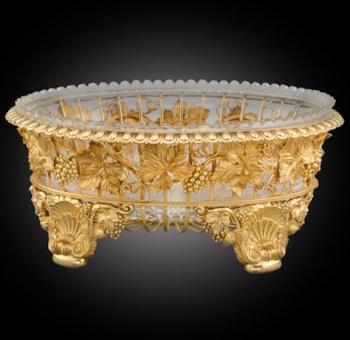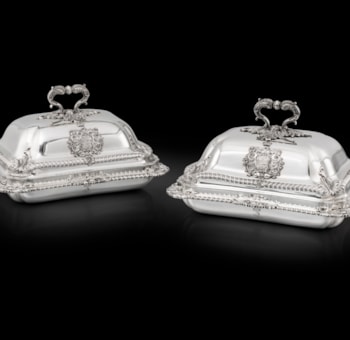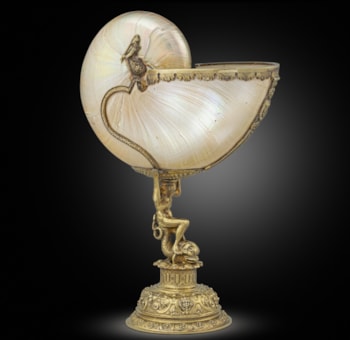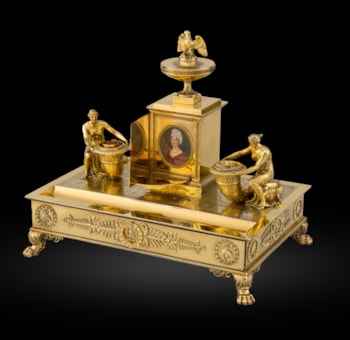 BACK TO LIST
BACK TO LIST
A Precious Little Cup
Dear Friends,
After these quiet months, we could all use some inspiration from pieces that evoke distant lands and enchanted atmospheres.
Koopman Rare Art are best known for our love of Georgian and Regency pieces but when it comes to objects of exceptional quality, our wunder kammer embraces many periods and styles.
Amongst our refined selection of early pieces, we decided to draw your attention to one of our favourite objects, whose chinoiserie decoration simply bursts with the joy and elegance we are all so in need of.
This Exquisite Charles II Hot Chocolate Cup with Cover was made in London around the year 1680 by the silversmith Ralph Leake. Image 1
The main body of the cup is decorated with incredibly delicate chinoiserie decorations of flora and fauna. Regal ho ho birds gracefully flutter their wings between exotic foliage and palms under what appears to be a marquee decorated with garlands and ribbons.
The silversmith took full advantage of the endless creativity permitted by the whimsical folly of the chinoiserie style and introduced the subtle detail of the cocoa trees amongst the vegetation to indicate the function of the vessel.
The cup is surmounted by a cover that, whilst keeping the drink warm, also doubles up as a small stand for the cup, to fully highlight its preciousness.
This is in fact the only known silver example of a chocolate cup of that period. As a highly heat conductible material, silver is not the most practical choice to serve a warm drink but the high rank of the patron must have justified the eccentricity of such a request.
The original owner of this cup is unfortunately still unknown but it is quite likely to have belonged to a lady of high rank or high visibility in society.
The female patronage of chinoiserie extravaganza is widely documented, especially in regard to the first wave of the trend that started around mid XVII century.
The “Chinese” denomination was used in those days as a sort of umbrella term to refer to all Asian and exotic countries explored by the trading companies, ranging from Japan to Turkey and even India. One hundred years later the “Chinese” fashion returned to England in decorative arts, from silver to furniture, as Chippendale’s directory of 1754 testifies, and was to stay well into the late Regency with elements still very present in the Victorian aesthetic taste. Image 2
In addition to the general gender pattern of consumption and taste, there is an additional curious piece of evidence that hints towards the female patronage as our precious cup has a very illustrious twin…
The same maker worked on a very similar gold version, currently in the collection of Temple Newsam (Leeds Museum and Galleries). Image 3
The gold twin to our cup boasts an incredibly fascinating story as it is believed to have been found at the bottom of a lake in Knowsley, in the estate of the Earl of Derby in the early 19th Century.
The precious vessel might have originally been made for Elizabeth Smith-Stanley, Countess of Derby. She was an incredibly fashionable woman, extremely popular in Society due to her decorative arts patronage, exquisite taste and… the scandalous nature of her marital affairs! The attribution of her ownership of the gold chinoiserie cup is reinforced by the fact that John Stalker and George Parker dedicated to her their “Treatise on Japaning and Varnishing” in 1688, praising her for her accomplishments. Image 4
Stalker and Parker’s publication contributed to the diffusion of the early Georgian taste for Chinoiserie decoration as they illustrate a selection of motives and elements that could be copied and reproduced on furniture or small items made to resemble original Asian lacquerware. Japanned work was made by amateurs, including ladies of genteel birth, as well as by professional artisans, and the Countess of Derby must have had a taste for such decoration. Image 5
The habit of drinking hot chocolate reached England during the commonwealth period, but it was not until the eighteenth century that it gained popularity. The preciousness of the pots and the vessels used to present it gives us an idea of the restricted social fragment that could access such an exotic and expensive product.
Particularly popular amongst ladies, an elegant cup of chocolate is often seen in paintings and prints, enjoyed both as a morning ritual in the privacy of one’s boudoir during the daily toilette, as well as a convivial refreshment served over acquaintances’ calls for chit chats or games of cards.
We hope you enjoyed reading about this enchanting tale and, as always, we invite you to visit our Gallery to see with your eyes the spectacular treasures we have in stock at the moment.
Let your imagination travel with us!
Chiara SPdF
A Charles II Hot Chocolate Cup with Cover
Silver
London, circa 1685
Maker’s mark of Ralph Leake
Height: 11.8 cm, 4.65 in.
Weight: 300 gr., 10 oz. 10.57 dwt.
Literature:
Harold Newman, An Illustrated Dictionary of Silverware (Thames and Hudson: London, 1987) p. 72.
Provenance:
Sotheby’s London, 23 May 1985.
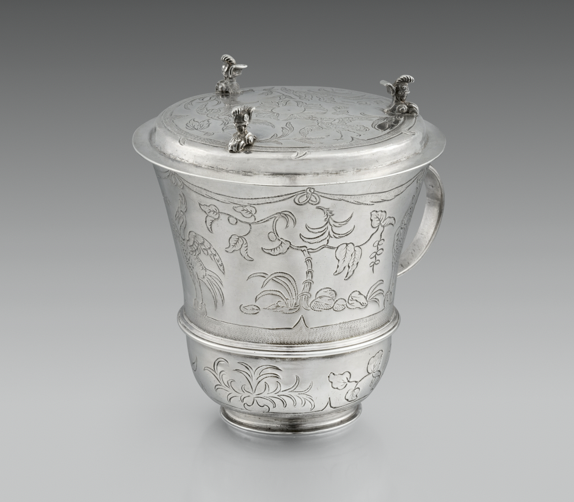
Image 1
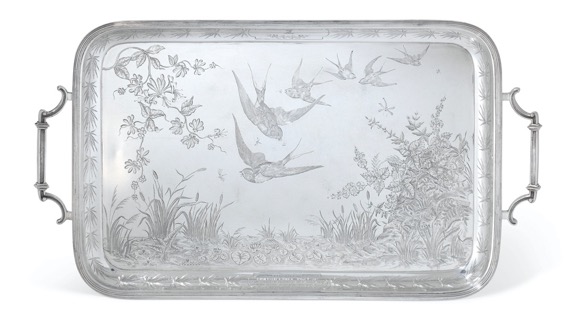
Image 2 A Victorian Aesthetic Tray, John Bernard, London 1878
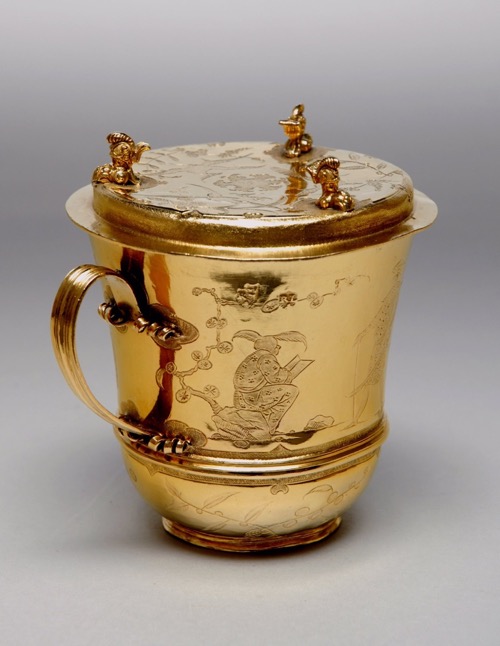
Image 3
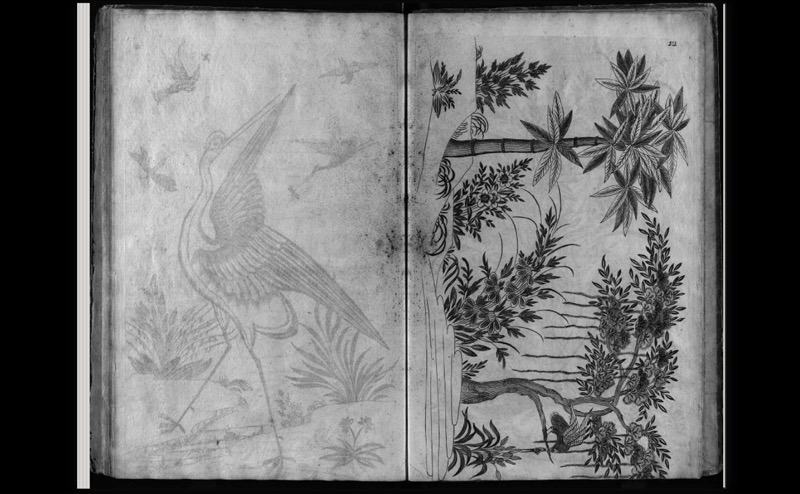
Image 4 Illustration from Stalker and Parker's Treatise on Japanning and Varnishing from 1688
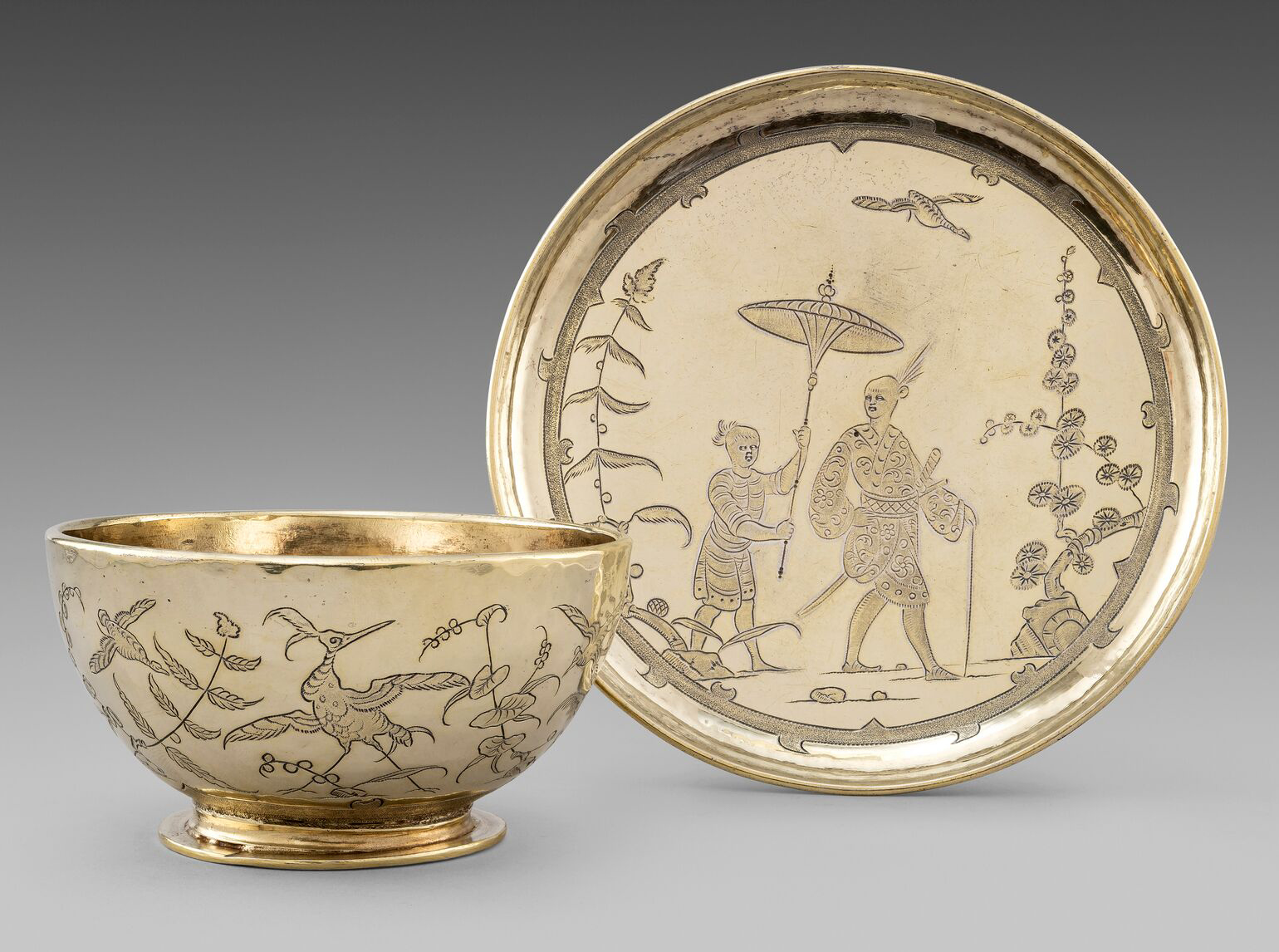
Image 5 A Highly Important Charles II Chinoiserie Cup & Saucer, Silver-gilt London, 1683







